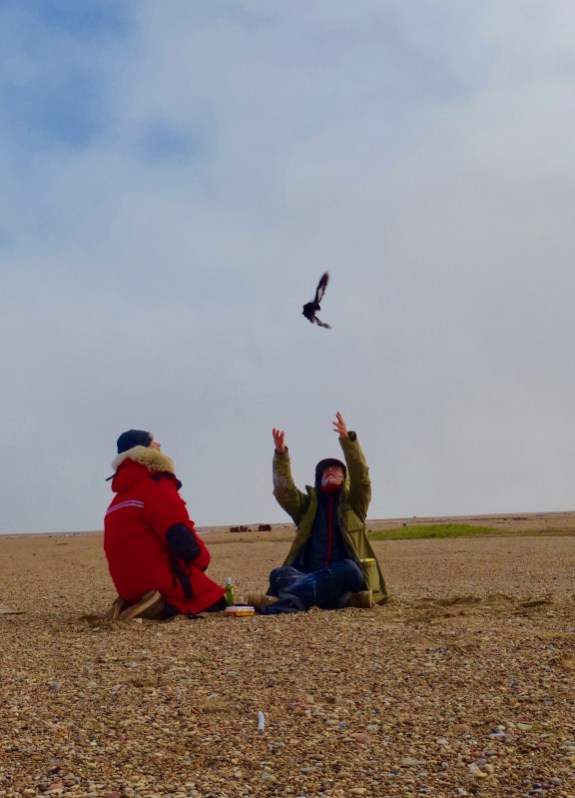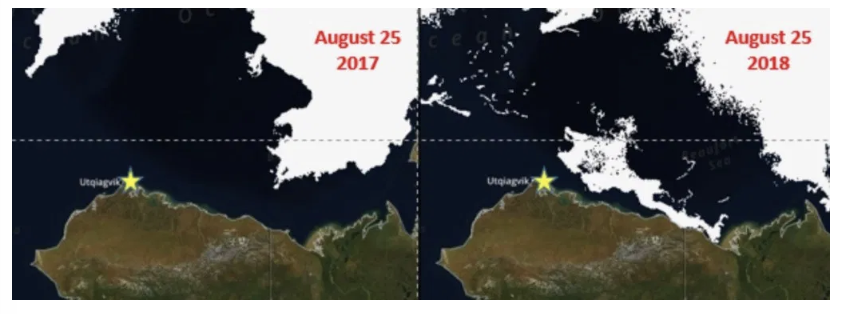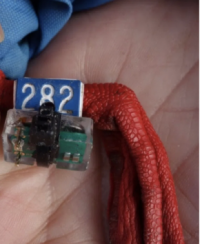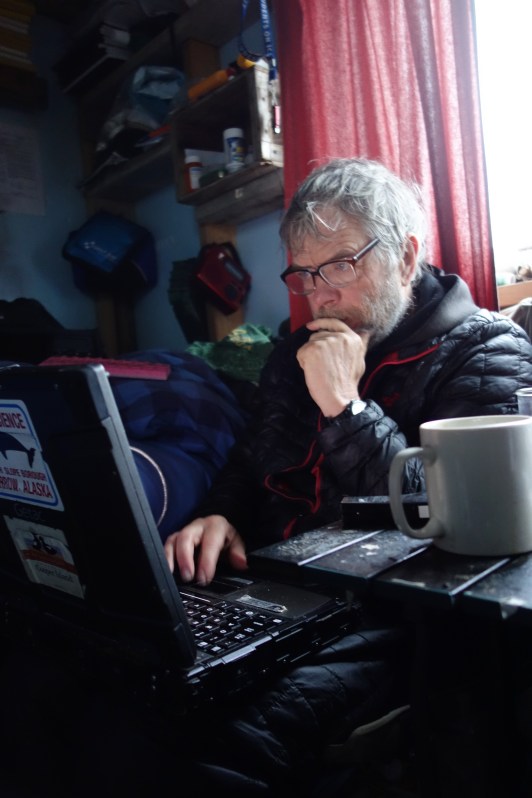End of season field report by George Divoky.

For the past four decades, my field seasons on Cooper Island studying Black Guillemots have always begun with high spirits and a feeling of optimism. Experiencing the 24 hours of daylight in early June while documenting the return of individual birds to the island and their nest sites is always uplifting – some of these seabirds have been returning to Cooper Island for decades. Then, the days begin to shorten as nighttime returns to the Arctic. After monitoring the colony’s breeding activity for over three months, the end of the field season in late August lacks the intensity of the start of the season, but until recently, provided the gratification of having a large number of nestlings depart the island – with the hope many will return in the coming years.
The end of my 2018 fieldwork was as atypical and unpredictable as the first part of the season. In June I saw the colony had experienced a major decline in breeding pairs due to unprecedented high overwinter mortality of adult birds and many of the birds that did return failed to either lay eggs or incubate the eggs they did lay.
After those initial indications that many of the adults were in poor condition in late June, I was surprised to find that the chicks had high survival in late July and August – unlike the widespread nestling mortality witnessed in 2017. Last year’s low breeding success, with the younger of the two nestlings dying in almost all nests, was due to an early and major retreat of the pack ice in the Beaufort Sea, making the guillemots’ preferred prey of Arctic Cod unavailable to foraging parents. This past summer’s sea ice retreat was later than last year and atypical in that, although much of the Beaufort was free of ice by late August, a large remnant of sea ice remained near the Alaskan coast keeping the waters near Cooper Island cold enough for Arctic Cod.

Our last two weeks on the island were busy. In addition to monitoring the growth and departure of the guillemot fledglings, we spent many hours capturing adult birds and outfitting them with light-sensitive geolocation and activity data loggers. The high mortality during the nonbreeding season of 2017-2018 shows that winter conditions affecting adult survival, rather than the success of the breeding season, may now play the major role in determining the fate of the Cooper Island colony. As part of the SENSEI project, we deployed over 30 data loggers on adults that will provide us with information on their movements, distribution and activities from this fall until they return to the Cooper Island colony next spring.

My field assistants, Thomas Leicester and Mike Morrison, and I did see individual variation in the ability of the guillemot parents to find cod in the ice-free but cold (<4 degrees Celsius) foraging area. While some chicks weighed over 300 grams in their third week in the nest, some nests had young with large variation in daily growth and weights remaining in the low to mid 200 gram range. While it was heartening to see nearly 40 guillemot nestlings fledge this year, due to the number of nonbreeding pairs and those that abandoned eggs, chick production per active nest was well below the one fledging per nest needed to sustain a stable population.
While I typically use my first week after the field season to slowly transition into an off-island existence, as I adjust to a life with running water, internet access and no polar bears, this year I traveled to Great Britain for the International Seabird Group Conference in Liverpool. I have always felt a kinship with British seabird researchers as my initial interest in conducting a long-term seabird study came from reading the books of Ronald Lockley, who in the early 20th Century decided to live on an uninhabited British island where he could study seabirds.
After the conference I traveled to the Centre d’Etudes Biologiques de Chizé where I am collaborating with Christophe Barbraud and others who, as part of the SENSEI project, are analyzing the 44 years of demographic data obtained on Cooper Island.
In spite of the highs and lows of the past three months, I am glad to have completed another field season of our long-term study. The unexpected findings of this past summer show that our work has never been more important as we continue to monitor a rapidly changing Arctic. I look forward to 2019 and hope things improve for the Black Guillemot colony in the 45th year of our fieldwork.
